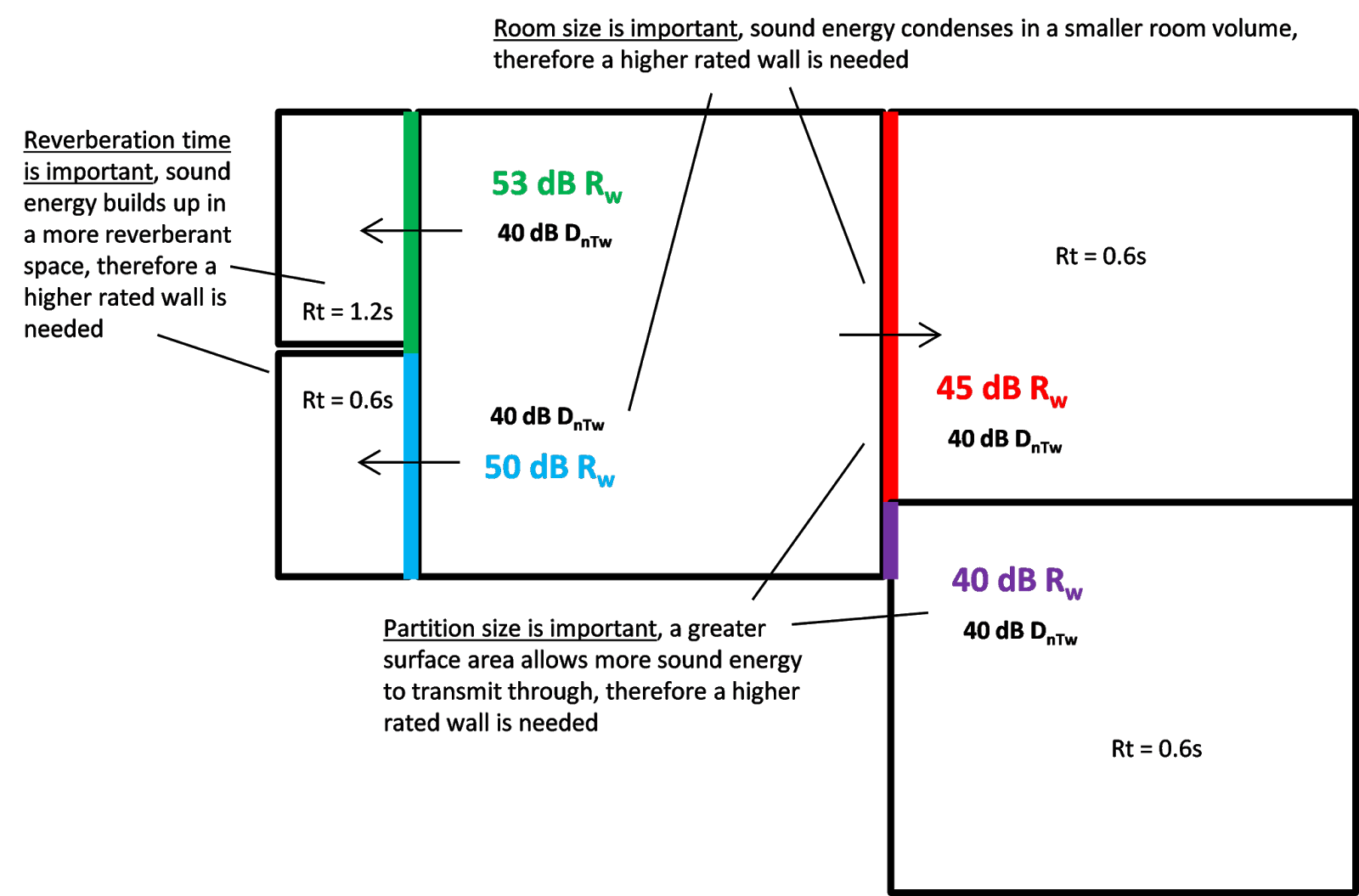Increase Folding Wall Performance
A common confusion in specifying wall types for building lies in the difference between Rw and DnTw. Misunderstanding this can lead to under or over performance, whilst grasping this simple difference could ensure a better result on-site, as well as present value engineering opportunities.
Jargon Busting
DnTw is a term that relates to ON-SITE sound insulation. This is the specified DnTw values. Because it's ON-SITE, it accounts for all sound transmission paths including through the separating partition and the flanking paths around it (i.e. through ceiling voids, ventilation paths, junction detailing etc..).
Rw is defined as a LABORATORY-RATED sound reduction index. Wall constructions should be specified as this: Measured in isolation from any other sound flanking paths.
Why is this Important?
The same construction or product measured in a lab will get the same result every time, but measured on-site, will vary from room to room and project to project.
The conversion from Rw to DnTw has to account for the size of the separating partition, and the volume and reverberation time of the 'receiving' rooms. It must also incorporate a factor to account for potential flanking transmission on-site due to construction quality or inattention to junction detailing.
Therefore it is a simple case of Rw =DnTw + X dB. The R can vary significantly between partitions, even if they require the same DnTw. The diagram below shows how this works.

Why does the Rw vary when the DnTw is the same?
Cearly we see from the diagram above, if the same wall type Rw (45dB ) is used everywhere, the DnTw is 40dB, there are rooms that will fail. On the flip side, if the most onerous requirement of 53dB Tw is used for all 40dB DnTw walls, then some areas will exceed the required performance by a considerable margin.
Of the two senarios, it is usually the latter that will occur within a design.
Therefore clear cost savings could be made by assigning wall types to partitions based on the required Rw, not simply the DnTw.
This can all be done whilst retaining the same number of wall types. In fact by careful design and attention to construction details, the build ups of wall types can be engineered to reduce unnecessary overspend on thicker or denser plasterboard products and still maintain the on-site acoustic performance.
Reducing every dB of overdesign quickly sums up when applying over projects, schemes and larger frameworks, particularly those common shared constructions.




